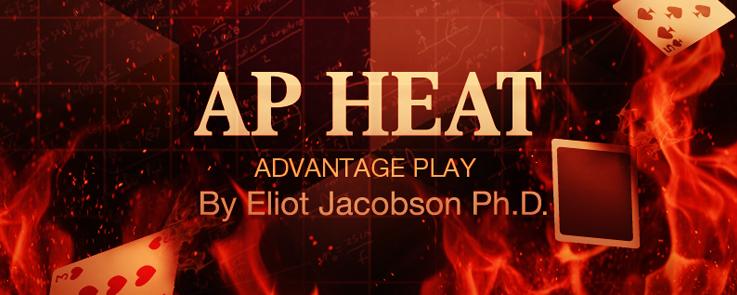Heads-Up Hold'em Hole-Card Play: One Dealer Card and One Flop Card

Heads-Up Hold'em (HUH) is just Ultimate Texas Hold'em (UTH) with a 3x pre-Flop raise and a bad-beat payout on the mandatory "Odds" = "Blind" wager. Its analysis in every case follows the same logical structure. As a consequence, it only takes me about 15 minutes to convert one of my old UTH programs to an HUH program to analyze the same vulnerability. The programming is easy. The hard part is that, just like UTH, it takes about 4-8 days (depending on the situation) to run a cycle. Because HUH is not yet widely available, I am going to call it quits on the game after this analysis.
In this post, I considered the case when the player can see one dealer hole-card in HUH and showed that with computer-perfect strategy, the player gets a 12.6014% edge over the house. The present post considers the situation when the player can see both one dealer hole-card one of the three Flop hole-cards before making his pre-Flop wager. This is a common situation. A poorly trained dealer will frequently expose the bottom card on every pack she delivers from the shuffler.
In the parallel case with UTH, I showed in this post that the AP gets a 22.3286% edge over the house with computer-perfect play. For HUH, because the game only allows a 3x pre-Flop raise, the edge is not going to be nearly as high -- the AP can't leverage positive situations nearly as much.
The following rather large spreadsheet gives the full pre-Flop details for this computer analysis:
HUH_1DHC_1FHC (23 M)
In particular,
-
The player edge in HUH knowing one dealer hole-card and one Flop hole-card is 17.1761%.
-
The player makes a 3x pre-Flop raise on 31.1847% of the hands.
-
The player checks pre-Flop on 68.8153% of the hands.
As far as game protection, I recommend that HUH be hand dealt, using the following procedure:
-
After removing the cards from the automatic shuffler, and after each player has made their Ante bet, a card is burned and two cards are dealt face-down to each player.
-
The players then look at their cards and make their pre-Flop check/raise decisions.
-
Another card is burned, then three Flop cards are dealt and turned face-up.
-
The players who have not yet raised then make their Flop check/raise decisions.
-
Another card is burned, then two Turn/River cards are dealt and turned face-up.
-
The players who have not yet raised then make their Turn/River raise/fold decisions.
-
Another card is burned, then two cards are dealt to the dealer and turned face-up.
-
All necessary cards have now been dealt, and the wagers can be resolved.
By avoiding dealing cards until those cards are necessary for the next wagering step in the game, there will be no hole-card opportunities. By burning the top card before cards are dealt, there will be no top-card (or marked-card) opportunities.


